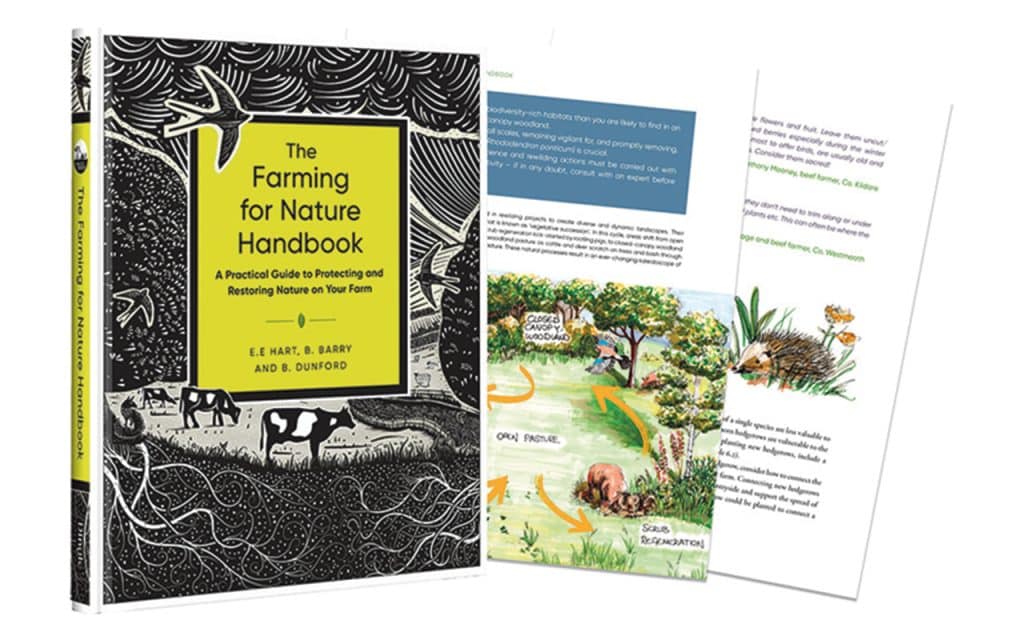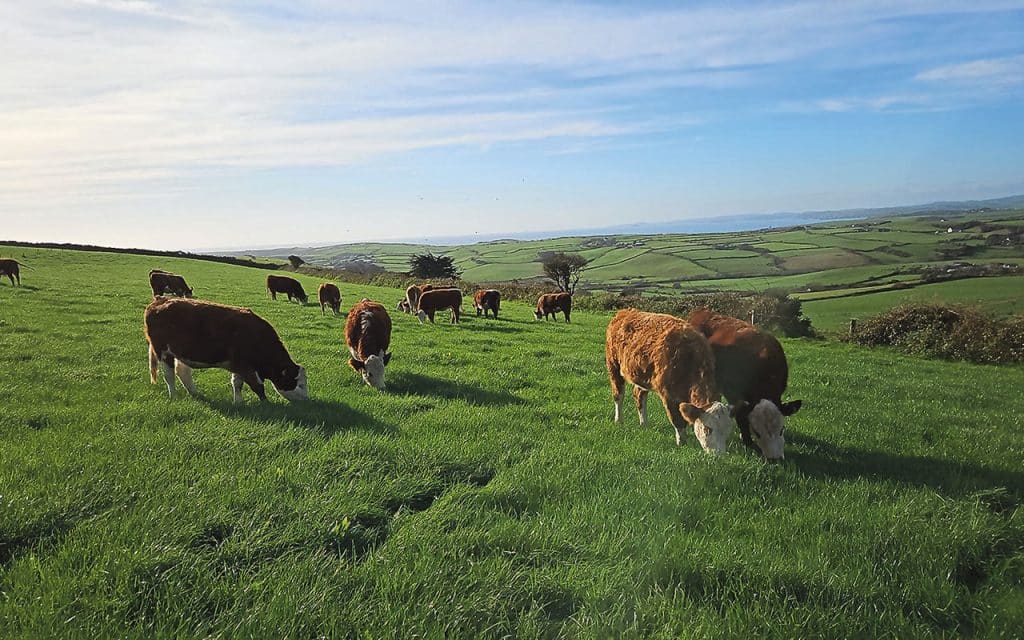A non-profit initiative founded in 2018 under the auspices of the Burren Beo Trust, Farming for Nature’s mission is to support, encourage and inspire farmers who farm, or who wish to farm, in a in a way that will improve the natural health of our countryside.
Publishing in December, the handbook is inspired by the regular requests received at Farming For Nature from people wanting to learn how best to manage their land, big or small, in a way that enhances habitats, increases wildlife, harnesses natural processes, protects profits, and safeguards the natural environment and rural communities for future generations.
West Cork native, Brigid Barry, who has been managing the project based in Kinvarra, Co Galway since it came into being, explains to Tommy Moyles how the book came about.

“Every year we find exemplary farmers throughout Ireland and they become our Farming for Nature ambassadors. Over the last six year they have been sharing their tips on how they improved or worked with nature on their farms and, while the information could be found on our website, we thought there was a digital overload. We felt we could distill it down to have the information condensed and available in one place and that’s where the idea of the book came about.”
A serious undertaking, research for the book started two years ago.
““Work began two years ago because we wanted to make sure all the tips we included were backed up by science,” explains Brigid. “Whether you’re a farmer with a lot of ryegrass who is looking to make small changes to become more climate resilient or someone who wants to devote a larger portion of their land to nature, this publication will give you some pointers on how to achieve your goal.”
“It’s not just for farmers either,” she adds.
“It’s for anyone who has a bit a land. There’s something relevant to anyone, whether they have 1,500 acres, 10 acres, or even just a small bit of land near their house. It applies to horticulturalists and homesteaders too. There’s also one chapter that deals with farm buildings and what you can do for nature in them and around the yard. As well as that there is a chapter on gardens. When we were putting it together, we decided to start with the topics that would be relevant with the biggest number of farmers so the first chapter is on soil and we move on from there. Grasslands, tillage/arable are covered and there’s chapters on wetlands, woodlands and uplands too.”
“The book clearly lays out why you should farm for nature.’ Brigid explains “Why the farmer should farm for nature and how that can benefit the profitability of the farm. After the winter we had last year, farmers have to look at this and adapt to it: By putting in different species into your grassland and fencing off around waterways and creating riparian zones or growing thick hedgerows that will soak up excess nutrients. Simple measures like these will save your farm in the long term and this book helps distil down how to implement them.
“We’re looking at profitability too, such as what practices can help a farmer reduce their purchased inputs; through this book, we’re giving them the tips to explore this. Those tips come from farmers who have done so already. The tips tell you exactly what you should do and how you can make the existing assets like soil water and grass work for you. If people want to build up soil fertility more and more, or allow pollinator strips develop and see the benefits from it, then this book allows people to explore that.”
A contractor doing the hedge cutting on farms may be used to cutting hedges back tight and this can set things back on farms where the farmer might prefer to leave the hedge go wilder. There are even tips on how to deal with that situation included in the book.
“There is a section in the book on how to talk to my hedge cutter. That’s back on the farmer and there are times when they must remind their contractor or whoever is doing the hedge cutting, who is paying for the job, and how they want it done. It takes ten minutes.”
Farming for Nature is distributing the book themselves and, while it won’t be released until early December, early feedback has been positive. Before it headed to print in late November there were over 1,400 copies sold already. For anyone with an interest in improving nature around them, be it their farm, locality, or garden, this publication is a must buy.
The ‘Farming for Nature Handbook’ is a 256-page book published with support from the Department of Agriculture, Food and the Marine (DAFM), National Parks and Wildlife Service (NPWS) and Lifes2Good. It is available on farmingfornature.ie



